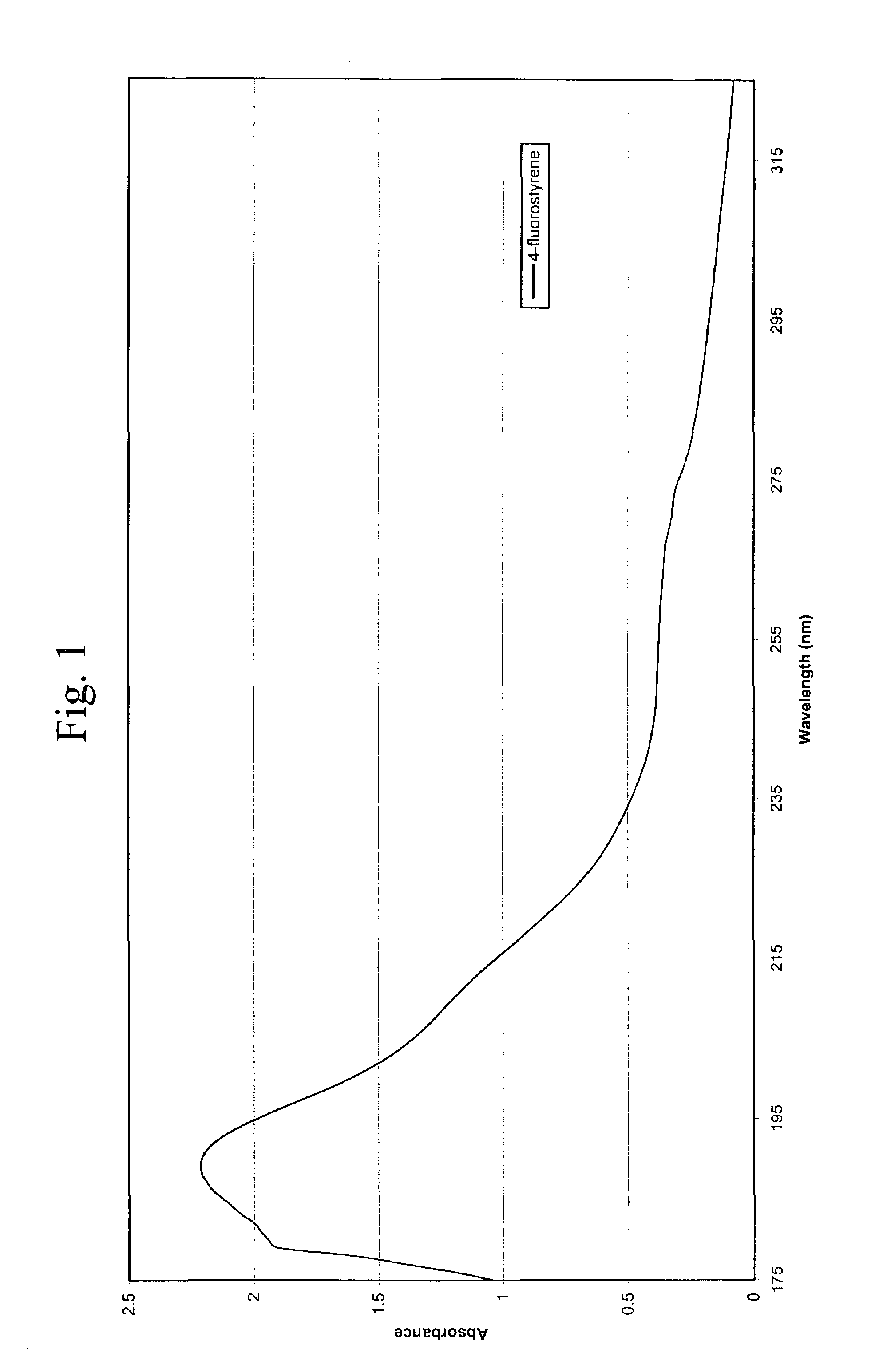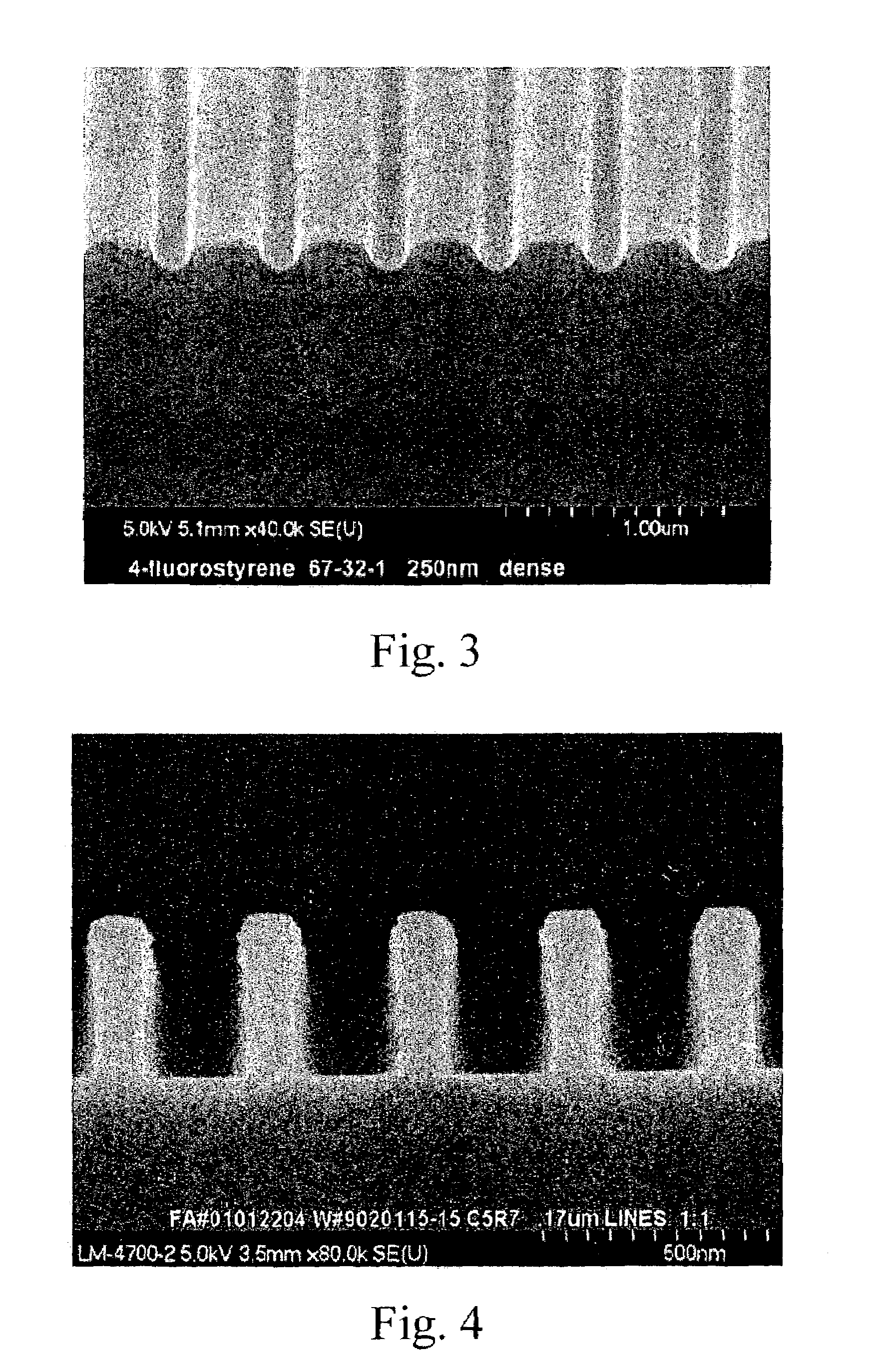Polymeric antireflective coatings deposited by plasma enhanced chemical vapor deposition
a technology of chemical vapor deposition and anti-reflective coatings, which is applied in the direction of resistive material coatings, plasma techniques, metallic material coating processes, etc., can solve the problems of insufficient planarization, limited performance, and magnified inherent inefficiencies of the spin coating process, so as to minimize negative effects, reduce overall waste, and minimize was
- Summary
- Abstract
- Description
- Claims
- Application Information
AI Technical Summary
Benefits of technology
Problems solved by technology
Method used
Image
Examples
examples
[0064]The following examples set forth preferred methods in accordance with the invention. It is to be understood, however, that these examples are provided by way of illustration and nothing therein should be taken as a limitation upon the overall scope of the invention.
Materials and Methods
examples 1-3
[0065]The PECVD process to which the antireflective compounds were subjected in the following Examples 1-3 involved subjecting the compounds to sufficient electric current and pressure so as to cause the solid or liquid compounds to form a plasma. The monomers to be deposited were initially weighed in a glass vial (generally around 0.2 g). The vial containing the monomers was attached (via a rubber stopper) to a quartz chamber connected to a stainless steel pipe, with flow through the steel pipe being controlled by a needle valve. The quartz chamber was surrounded by an RF coil which, in turn, was connected to an RF generator. The RF generator generated the electric current in the quartz chamber through the RF coil. The quartz chamber was also connected to a deposition chamber in which the substrates were loaded.
[0066]The deposition chamber and quartz chamber were evacuated by pressure (usually around 20-100 mTorr, preferably around 30-50 mTorr). The monomers to be deposited were ke...
example 1
Deposition of 4-Fluorostyrene
[0068]The antireflective coating layers were prepared by PECVD polymerizing a 0.2 g sample of 4-fluorostyrene (Structure A, obtained from Sigma-Aldrich) onto six- or eight-inch flat silicon wafers, topography wafers, quartz slides, aluminum substrates, tantalum (Ta) substrates, and tantalum nitride (TaN) substrates. Before deposition, the pressure was about 40 mTorr. During deposition, the pressure was maintained around 95-100 mTorr, and the temperature was room temperature (about 23° C.). The RF plasma power was set at 80 watts and cycled as discussed above. An initial eight runs on flat substrates were conducted to determine the best film thicknesses, optical properties, film uniformity, intermixing with photoresists, resistance to resist solvents, and adhesion to the various substrates. The topography wafers were used to determine conformal properties. The 4-fluorostyrene deposited at a rate of 136 Å / min. on an eight-inch substrate. This deposition ti...
PUM
| Property | Measurement | Unit |
|---|---|---|
| Length | aaaaa | aaaaa |
| Fraction | aaaaa | aaaaa |
| Pressure | aaaaa | aaaaa |
Abstract
Description
Claims
Application Information
 Login to View More
Login to View More - R&D
- Intellectual Property
- Life Sciences
- Materials
- Tech Scout
- Unparalleled Data Quality
- Higher Quality Content
- 60% Fewer Hallucinations
Browse by: Latest US Patents, China's latest patents, Technical Efficacy Thesaurus, Application Domain, Technology Topic, Popular Technical Reports.
© 2025 PatSnap. All rights reserved.Legal|Privacy policy|Modern Slavery Act Transparency Statement|Sitemap|About US| Contact US: help@patsnap.com



